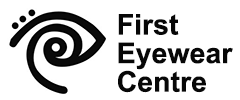What Is Myopia Control?
Myopia control is a treatment option to slow down the progression of myopia (shortsightedness). Childhood myopia is a progressive visual disorder that results the child to have poor distance vision. If the child’s myopia is severe, it will impair near vision as well. Childhood myopia tends to increase rapidly between 5 and 15 years old, stabilises in early twenties.

How myopia affects our children?
Myopia changes the physical structure of the eye, steepens the front surface of the eye (cornea) and/or stretches the retina (axial elongation). Myopia is one of the leading causes of blindness around the world and has a direct association with retinal detachments and glaucoma.
Myopia definitely has a genetic link, 2 times more if one of the parents is myopic; 8 times more if both parents are myopic. However, environmental stress of near work such as reading, studying, computer use, handheld games and the lack of outdoor time has driven progression of myopia. In fact, one theory of increasing myopia is that it is our eye’s method of adapting to the demand of prolonged near work. A myopic child uses lesser effort to read at near because he/she has no issue in near vision!
Why do we need myopia control for your child?
Since myopia control treatment can slow down the progression of myopia. Myopia control may keep your child from developing high myopia that require thick eye glasses. Myopia control may prevent your child from associated serious eye problems later in life, such as early cataracts, glaucoma or retina detachment.
There are 4 types of myopia control treatments:
- The use of atropine eye drops was prescribed to slow down progression of myopia since 1960s. Higher-dose 1% of atropine was introduced in 1990s in Singapore for myopia control. However, the child exposes to more UV stress and reading problem due to dilation of the pupils. Low-dose 0.01% atropine recently prescribed shown 50-60% of slowing down myopia.
- Multifocal contact lenses are options for active lifestyles individuals who dislike wearing eye glasses, yet maintain clear vision at both distance and near. Multifocal contact lenses are mainly used for presbyopia, a condition that inhibit us to focus near tasks as we age.
For myopia control, multifocal contact lens design is employed as it has two distinct portions within the optical zone to slow down myopia.
- Ortho-K ( short for orthokeratology ) a non-surgical procedure using specially designed customised rigid gas permeable lenses are worn only at night and removed when awakening. Since the lenses are re-applied each night as the procedure is reversible, making it safer for children. The lenses reshape the front surface of corneas at night. After lenses are removed, the result is clear, corrected vision all day without the need of eye glasses. Ortho-K has been shown to slow myopic progression the most in controlled clinical trials on creating peripheral myopia. Clinical trials have reported it slows down myopia from 55% to 100%.
- Multifocal eye glasses (PALs). PALs have no significant studies proven slow down of myopia since 2003. Bifocals is the common type to be prescribed. Optometrist needs to rule out any binocular abnormality before recommendation.
